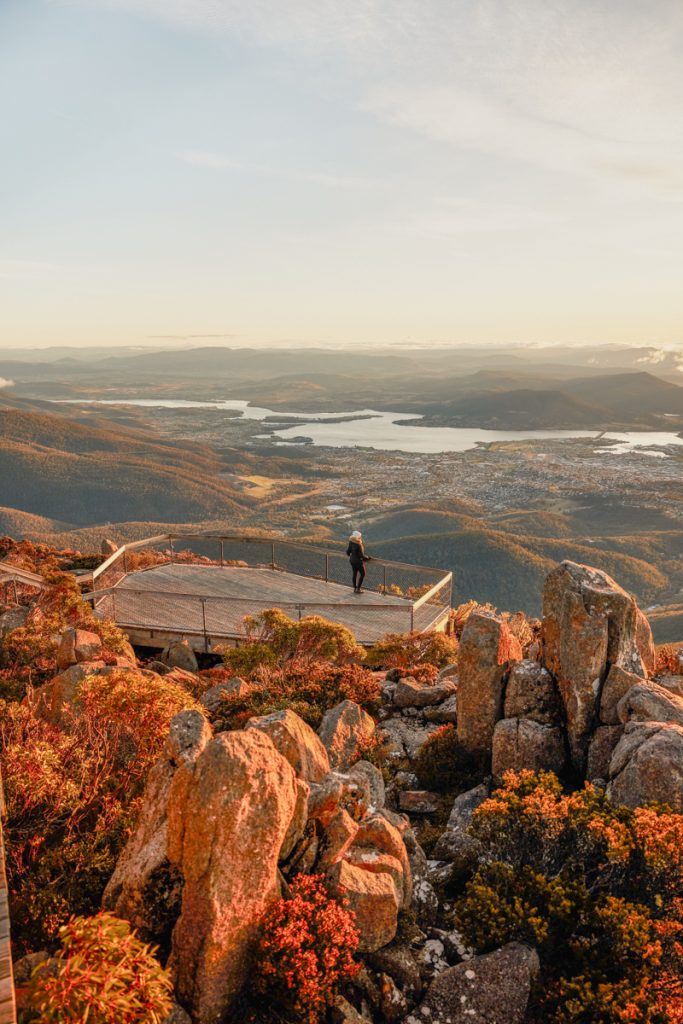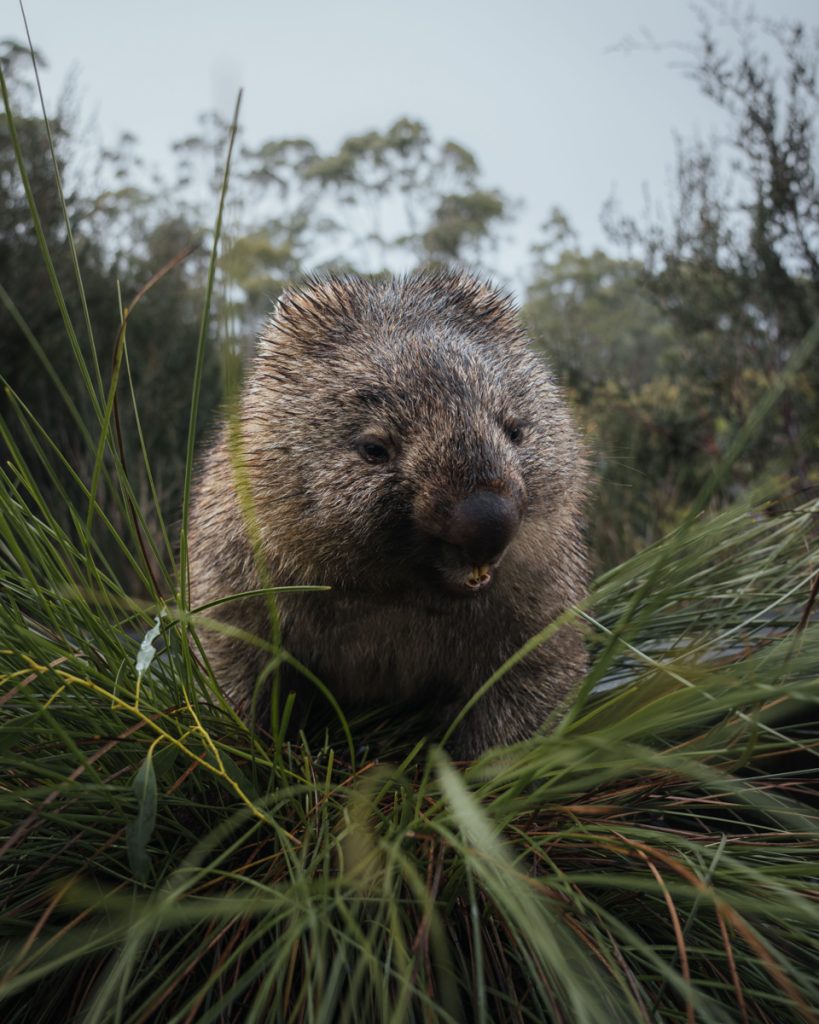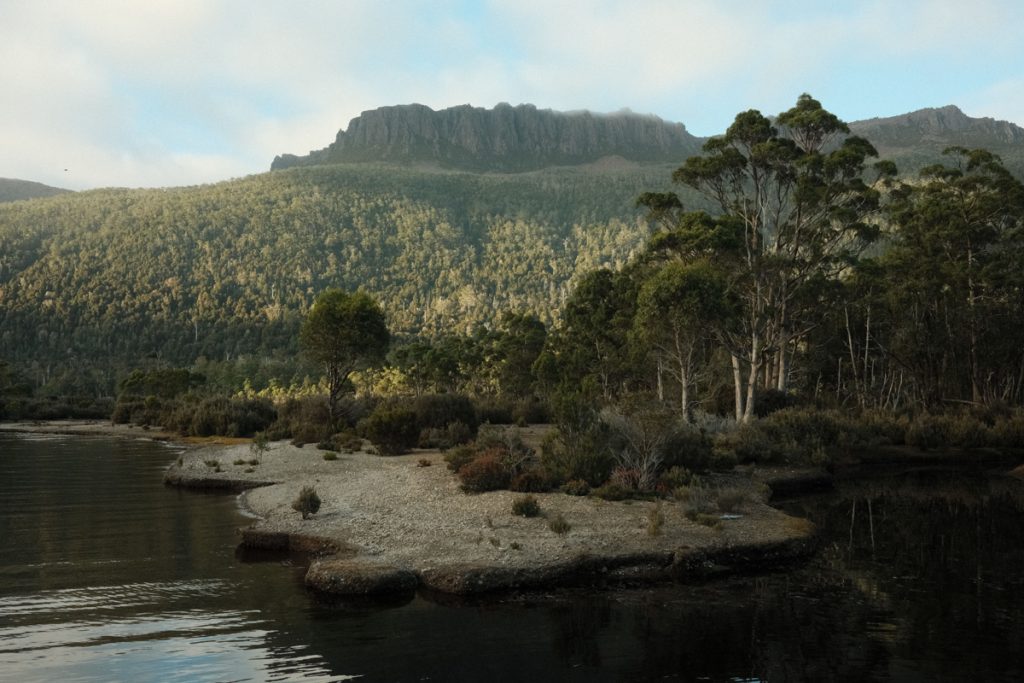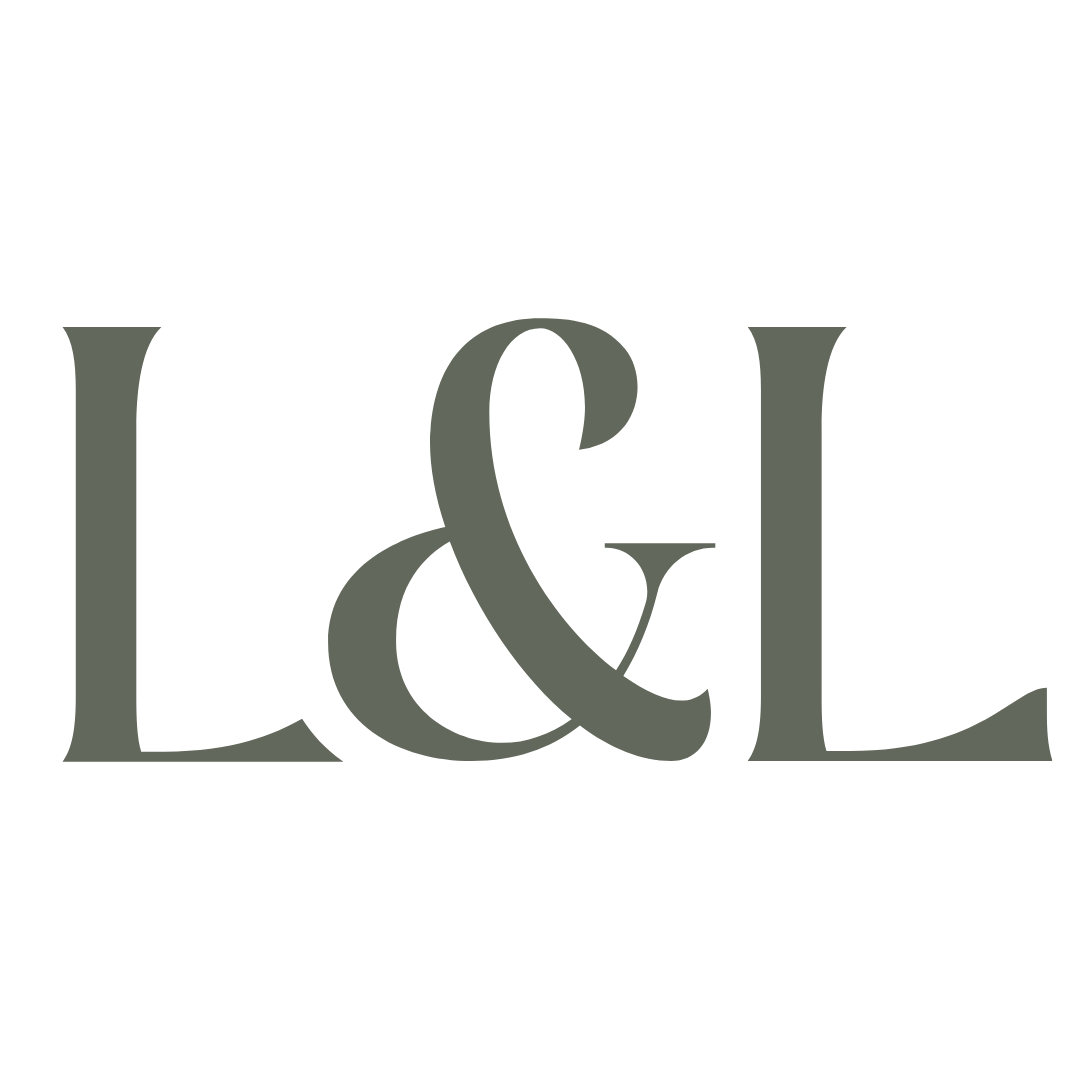Touring Tasmania
Travel articles can be frustrating – perfect meals, non-existent budgets, no crowds, insects, thin hotel walls or upset tummies. Alas, this is not the article that will genre-bust travel writing, because 10 days in Tasmania delivered for me (a wine and history geek) and my two travelling companions (a nature-loving fitness freak and a hard-to-please youth).
Words Jo Cribb

The winding road to the lookouts on kunanyi/Mount Wellington are well worth the effort for the views over Hobart and surrounds. Photo Samuel Shelley.
Tasmania is blessed with fresh seafood, produce and cheese. Launceston to the north is even a UNESCO City of Gastronomy. Queue for scallop skewers at Salamanca, Hobart’s expansive waterfront Saturday market. Or polish off your body weight in fresh and washed rind cheese from the Bruny Island Cheese Company. Bruny Island is a quick ferry trip from Hobart and provides magnificent beaches to walk off that dairy.
Finish your feasting with handcrafted chocolates. The caramel popcorn and spiced gin chocs at the Richmond Chocolate Shop, based in the bucolic Jane Austin-like village of Richmond just north of Hobart, stood no chance in our hot hands.
Enjoying gourmet food is thirsty work. Luckily Tasmania produces fabulous cold climate Pinot Noir and Chardonnay. That means zingy sparkling wines, citrusy Chards, and delicate, red-fruited Pinots. You are never far from a wine region, with four main areas dotted around the coast. Expect to pay A$10–20 to taste five or so wines in beautiful settings. The local craft beers, gin and whisky aren’t too shabby either.

MONA is a must-see. Be prepared to be challenged. Photo Jesse Hunniford.
Then we shifted our focus to feeding our minds. The Museum of Old and New Art (MONA) north of Hobart is an underground warren of challenging and exquisite art. Created by a local mathematician who won a fortune gambling, there are no labels on any artworks (a clever app tracks your location and provides information). On display is a first-edition Shakespeare along with Egyptian sarcophagi, a machine that mimics the human intestine, a doll chopped in half by the guillotine that did the same to Marie Antoinette, and signed Elvis photos. It’s unrelenting, overwhelming and magnificent all at the same time.
Not surprisingly, after that experience we were keen for some fresh air and nature. The drive up the winding road to the top of kunanyi/Mount Wellington is well worth it for the views over Hobart. Take a coat as that wind is coming straight from Antarctica. But it was Cradle Mountain that really took our breath away. World Heritage Listed Cradle Mountain-Lake St Clair National Park is about four hours’ drive from Hobart. Its glacier-carved mountains, crater lakes and dense bush even impressed my bush-loving bloke.

Photo Jason Charles Hill.
It was there we saw our first live wombat ambling along (sadly we’d spotted too many that weren’t roadside). Intrigued to learn more, we spent a fascinating few hours at the Bonorong Wildlife Sanctuary and learnt that wombat poo is square (they use it to mark their territory so don’t want it to roll away and even make little towers of it), while hand-feeding the roos and admiring the devils. At the Platypus House, north of Launceston, we watched platypus dive for live crays, echidna hoover up fly larvae, while being warned about the deadly neurotoxin in male platypus’ spurs. It’s not only the Aussie snakes that are out to get you.
Finally, there’s the history. Hobart is Aussie’s second oldest city and transportation of convicts (some as young as nine) began mid-1800s. Port Arthur penal settlement, one hour’s drive south of Hobart, is a haunting reminder. On one side there are rows of pretty cottages and a large formal garden (to remind the officers of England); on the other, the massive sandstone facade of the penitentiary that housed nearly 500 prisoners in dungeon-like conditions. Tasteful commentary tells the convicts’ stories.
In Short: There is something for everyone. We were pleasantly surprised that entry prices were reasonable (around A$30–40), it is easy to get around, it wasn’t over-run with crowds, and the locals are delightfully friendly.

Mt Olympus from Lake St Clair, Overland Track. Photo Blake Lisk.
Where to …
EAT
Stop at the Exeter Bakery for delicious baked goods and pies. Try the Jello Lamo Samo (their innovative take on lamingtons) and the Jack Daniel’s Beef Brisket pie.
Order the Tasmanian Grazing Platter at Nadines Café, Pipers Brook Vineyard to taste the freshest cheeses, home-made crackers, prawns, pesto mushrooms, duck rolls and pears poached in Pinot Noir. Wash it down with a glass of the reasonably priced sparkling and still wines made on-site.
DRINK
Sip delicious Pinot Noir at Pooley Wines, an easy hour’s drive from Hobart. We particularly enjoyed their latest release, the 2024 Pinot Noir paired with their duck and hoisin sauce pizza and the mushroom and truffle oil one. If you have room, try the apple crumble pizza with its crunchy crumble and crème fraîche topping.
For the ultimate wine tasting, book yourself into one of the House of Arras experiences. Makers of premium sparkling wine, the cuvées, sparkling rosés and Blanc de Blancs are world-class delights.
PLAY
Don’t leave spotting Tasmanian wildlife to chance. Visit Bonorong Wildlife Sanctuary to meet rescued wombats, Tasmanian devils, quolls, kangaroos, pademelons, and cheeky cockatoos.

The Neck – Bruny Island. Photo Tourism Australia.

